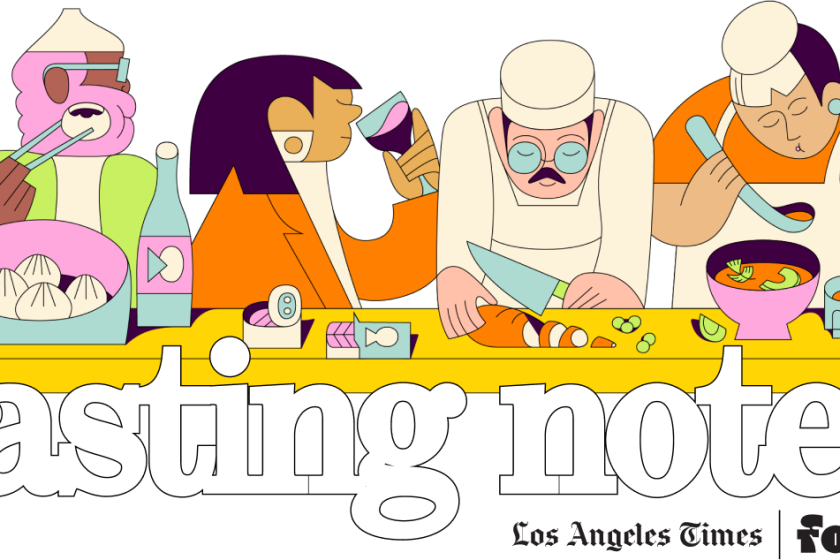Michelin or World’s 50 Best Restaurants: Which is more relevant?

One world guide ignores Latin America, the other celebrates it. Does Virgilio Martínez’s new No. 1 ranking for his Peru restaurant give new relevance to global rankings? Plus, terrific Rajasthani food in Artesia’s Little India, the next generation of 99 Ranch, a $600,000 wine heist and more. ... I’m Laurie Ochoa, general manager of L.A. Times Food, with this week’s Tasting Notes.
Peru’s moment
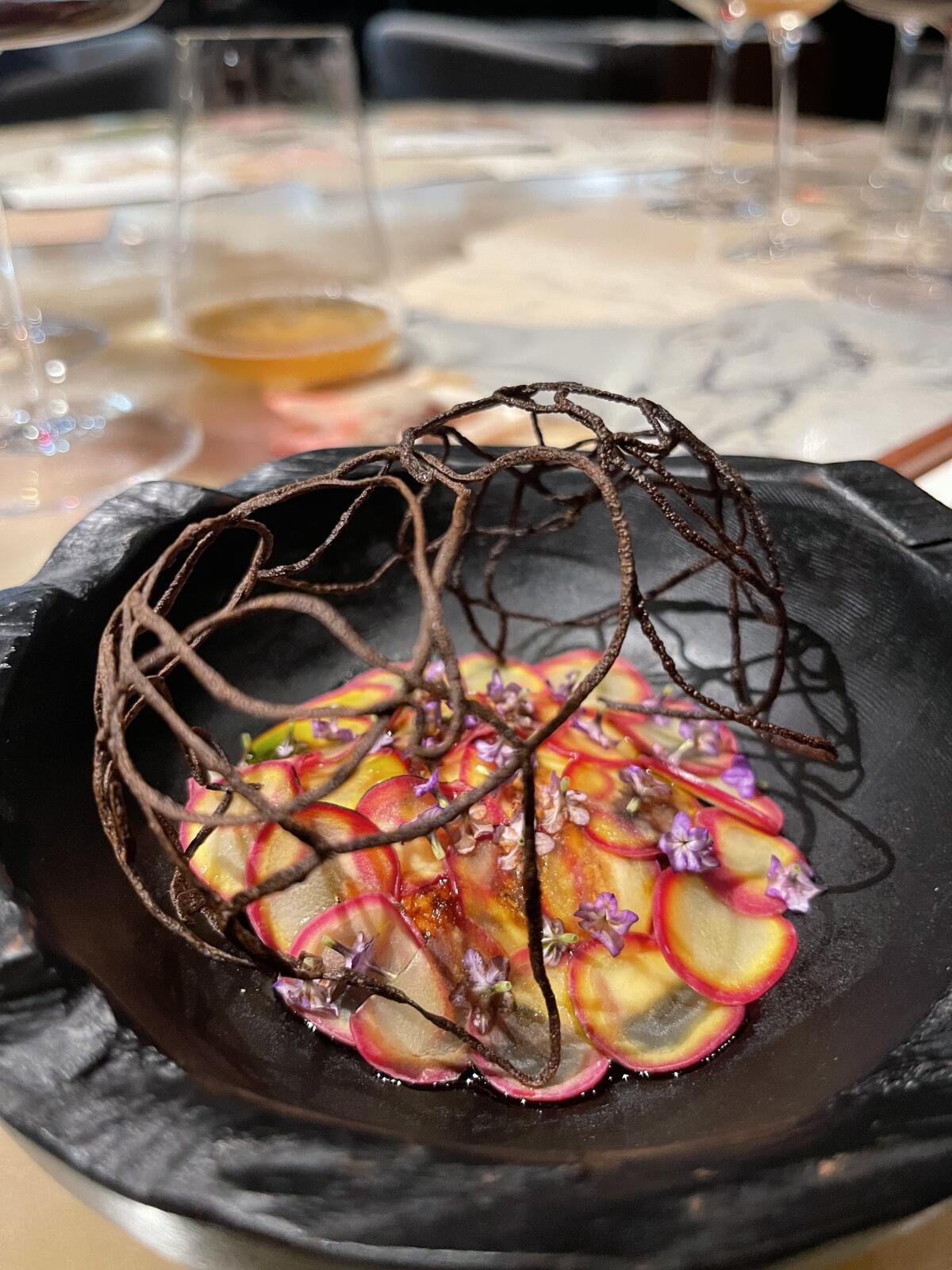
We’ve had a complicated relationship here in Los Angeles with the Michelin Guide. I remember that when the French tire company’s first Los Angeles restaurant guide was published in 2007, Jonathan Gold called it “irrelevant,” “showing neither knowledge of nor much respect for Los Angeles, [with] the usual Hollywood banalities ... recycled like so much fryer sludge at the biodiesel plant.”
The feeling was mutual. In 2010, after the company stopped publishing an L.A.-specific guide, Michelin director Jean-Luc Naret told Esquire’s John Mariani, “The people in Los Angeles are not real foodies. They are not too interested in eating well but just in who goes to which restaurant and where they sit.”
In its current assessment of California restaurants, no place in Los Angeles was deemed worthy of Michelin’s highest three-star ranking. That may or may not change when a new California guide for 2023 is released on July 18, but even if it doesn’t, we’ll go on happily eating in what we know is one of the world’s most exciting food cities.
And what of the World’s 50 Best Restaurants, which also ignores Los Angeles, at least on its main list? In 2016, GQ’s Brett Martin called the list, which debuted in 2002, “a rebuke to Michelin and its old-world — which is to say, classically French — values. ... If Michelin is the list of white tablecloths, the 50 Best is the list of no tablecloths.”
And yet, like the Michelin Guide, the World’s 50 Best has been criticized for being Eurocentric, with not enough attention paid to the accomplishments of women chefs. Perhaps in response to the sexism charge, the 50 Best organizers introduced a World’s Best Female Chef award in 2011, a move some have called “a cover for the organization’s lack of women in the overall rankings.” Dominique Crenn, 2016’s World’s Best Female Chef, told the Washington Post that the designation was “stupid. A chef is a chef.” Indeed, in 2018 she became the first woman chef in the U.S. to run a restaurant that earned three Michelin stars (chalk one up for Michelin); later, her San Francisco restaurant Atelier Crenn placed 48th on 2021’s World’s 50 Best list and she won the 50 Best’s Icon Award that year as well.
This year, the differences between the two lists became even more distinct. For the first time, a restaurant from South America — Virgilio Martínez‘s Central in Lima, Peru — landed the No. 1 spot on the World’s 50 Best list. This is notable because every No. 1 restaurant until this year has been based in Europe or the U.S., though only one of its No. 1 restaurants is located in France — Mauro Colagreco‘s wonderful Mirazur in Menton.
Indeed, the 50 Best list has always paid more attention to restaurants in Mexico and Latin America than Michelin — easy to do when Michelin has not even bothered to publish guides (so far) to restaurants in these important regions. Still, in 2012 only one of the top 25 World’s Best restaurants was located outside Europe or the U.S. (DOM in São Paulo, Brazil).
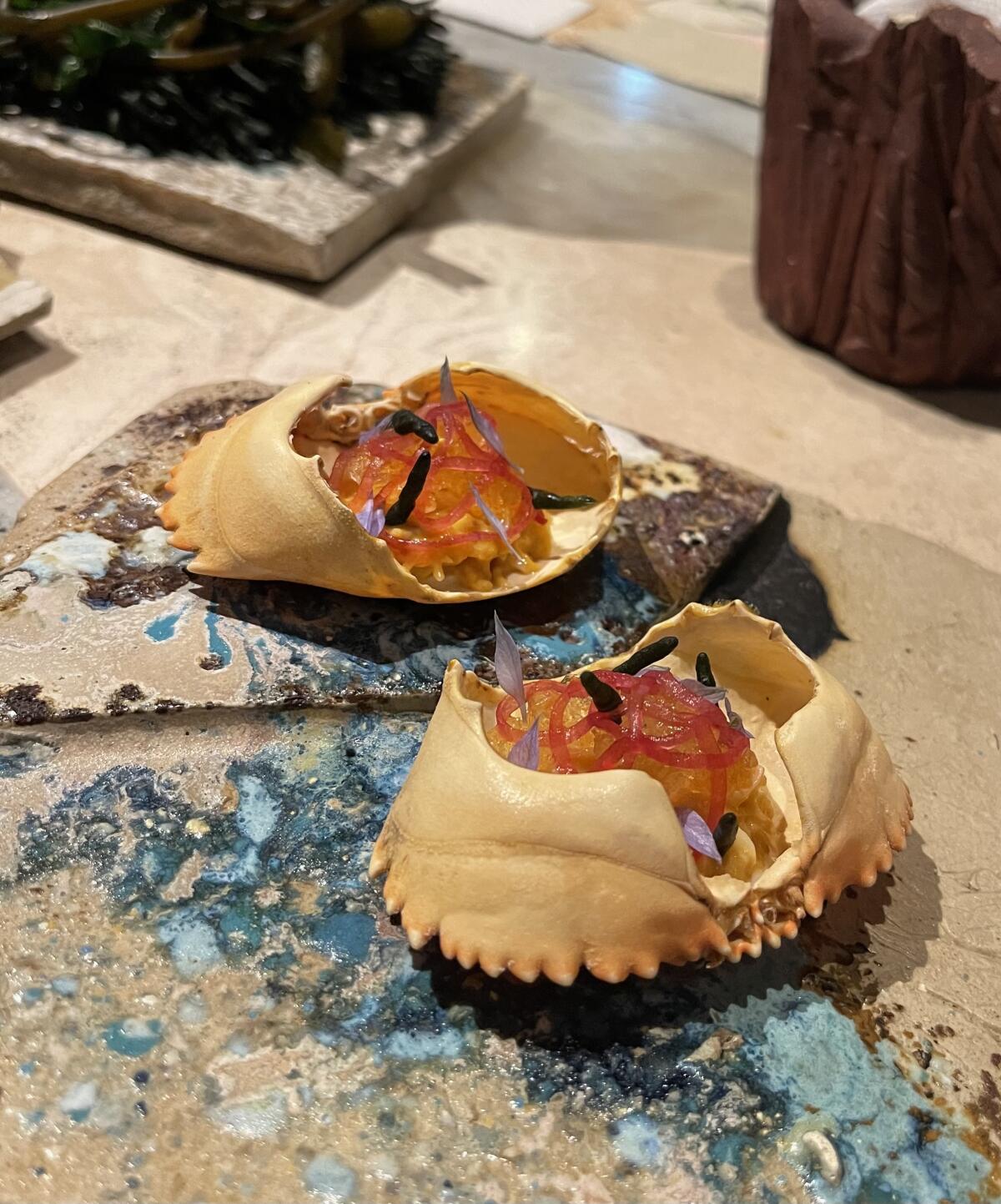
This year, however, the 50 Best list includes four restaurants from Peru alone — Martínez’s Central; Mitsuharu “Micha” Tsumura‘s luxury Nikkei restaurant Maido, ranked No. 6; Kjolle, at No. 28 and run by Martínez’s wife, Pia Léon, who in 2021 was named Best Female Chef; and Jaime Pesaque‘s Mayta at No. 47. There were also two restaurants on the list based in Mexico — Jorge Vallejo‘s Quintonil at No. 9 and Enrique Olvera‘s Pujol at No. 13 — plus one from Brazil, wife-and-husband co-chef team Janaína and Jefferson Rueda‘s A Casa do Porco at No. 12.
I had the chance not long ago to eat at Martínez’s Central and Léon’s Kjolle, as well as at Mil, Martínez and Léon’s restaurant in the Andes attached to his sister Malena Martínez‘s research-driven Mater Iniciativa, for a story that will appear later this year. Since then, I’ve been thinking about the way chefs like Martínez and Léon, working at the highest level of their craft, are at the center of a network supporting farmers, craftspeople, vintners, coffee roasters, distillers, chocolate makers and more, as well as providing inspiration for younger chefs looking to carve out new paths.
Lima’s Barranco neighborhood, near the ocean and not far from Miraflores, is home not only to Central and Kjolle but to a thriving and exciting food scene that, like Los Angeles, doesn’t need the blessing of world rankings from outsiders. And yet, after being blown away by gorgeous course after gorgeous course made with ingredients we rarely see in the U.S. (the massive Amazonian paiche fish, “flying potatoes” grown on trees, gelatinous pulp from cocoa pods turned into delicious elixirs and desserts) and served with South American wines not only from the expected Chilean and Argentine vineyards but Uruguayan and Peruvian wines and distilled spirits seldom exported, I thought that more people should know about this hub of creativity.
This is where a list like the World’s 50 Best Restaurants can do some good. By bringing attention to the admittedly pricy menus of chefs like Martínez and Léon, who go out of their way to showcase growers and artisans from all regions of their country instead of serving generic luxury food, the 50 Best can help keep traditions alive while encouraging innovation. We’ll see if Michelin catches up to what it’s been missing in Peru.
Enjoying this newsletter? Consider subscribing to the Los Angeles Times
Your support helps us deliver the news that matters most. Become a subscriber.
A thali feast
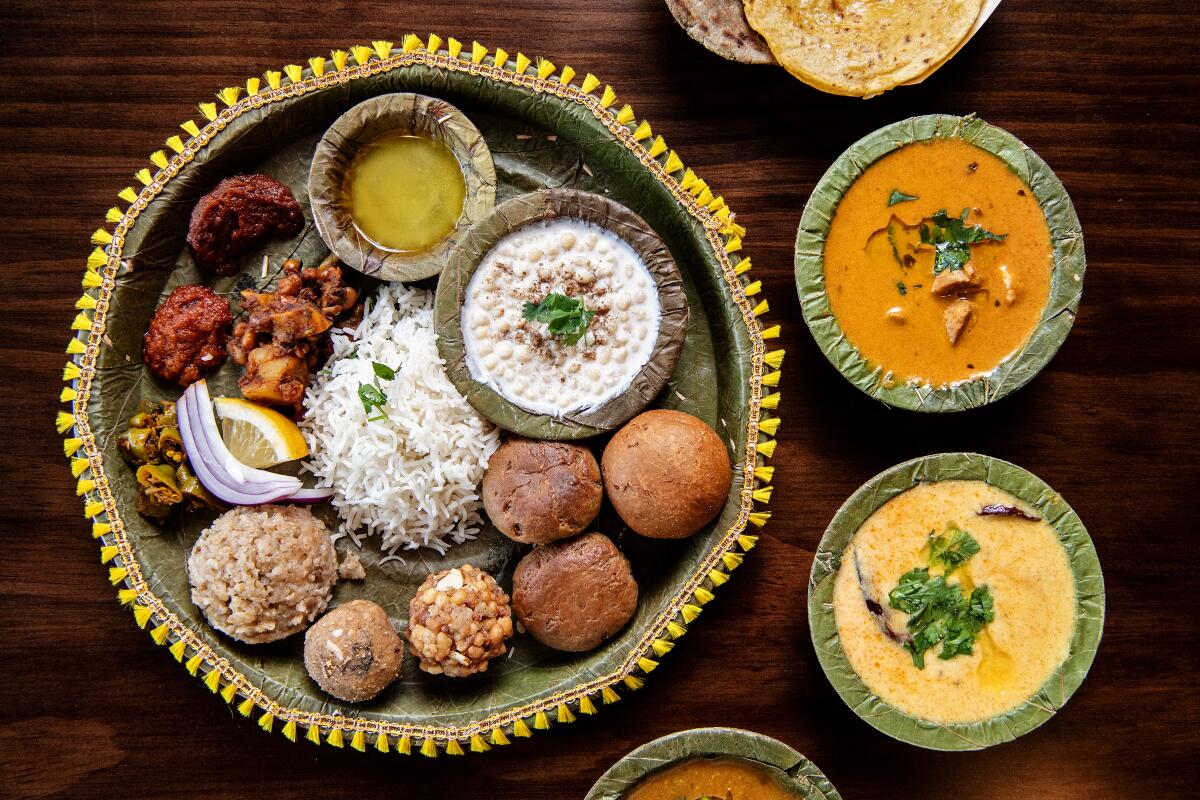
It may not make the Michelin or 50 Best guides, but restaurant critic Bill Addison says we should head to Artesia to eat the Rajasthani specialties served as part of the maharaja thali at Bhookhe. It’s one of the restaurants that makes this such a terrific and diverse food region.
Down at the Ranch
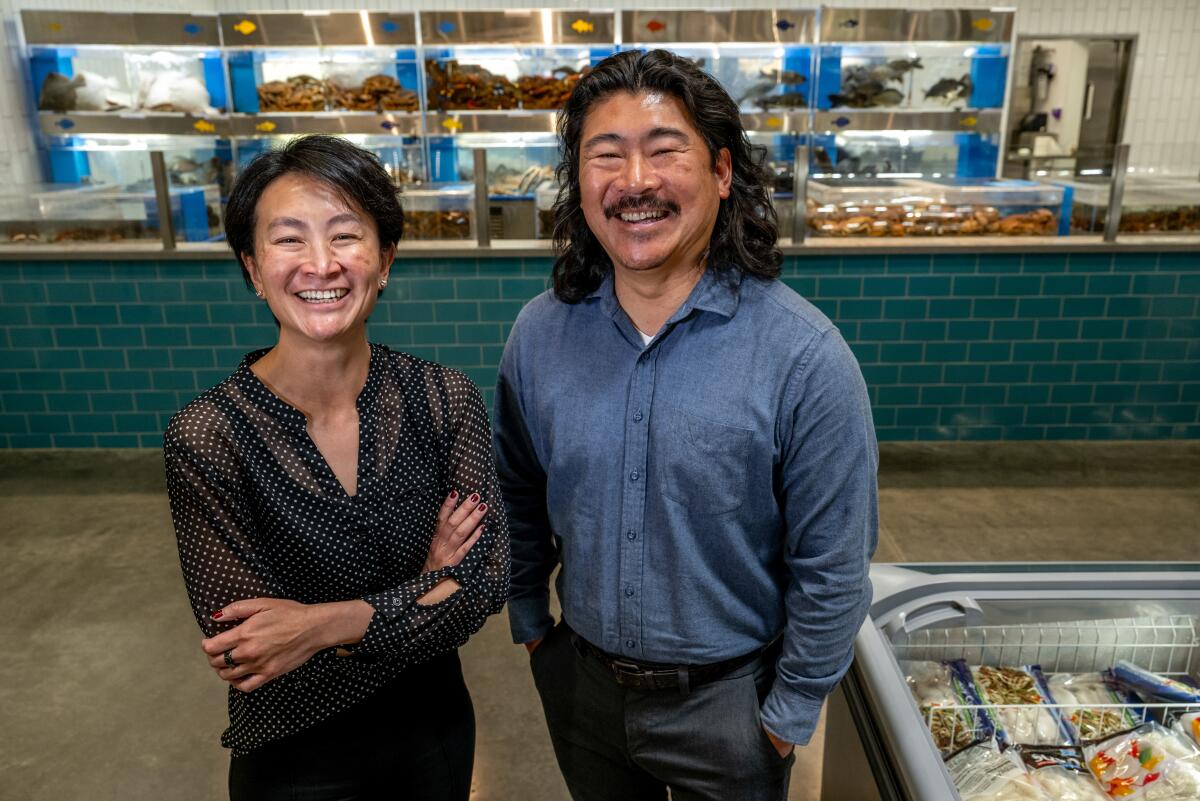
Writer Clarissa Wei, like countless other California shoppers, knows that “99 Ranch is much more than just a grocery store. It’s a pilgrimage.” Her interview with siblings Jonson and Alice Chen, who have taken over day-to-day operations of the market — founded in Westminster in 1984 by their father, Roger Chen — is a fascinating look at the expansion plans for the beloved chain and why the live fish tanks aren’t going away.
Liquid diet

After eating countless salads for his recent ranking of Southern California’s salad chains and drinking gallons of water for the official bottled water power rankings, L.A. Times Food columnist Lucas Kwan Peterson may be due for a big juicy burger, or at least a buttery croissant.
Why bother to rank the taste of dozens of bottles of still water? Isn’t water just water? After reading his report — with the waters ranked like video game characters in tiers, from “S” for best through the disappointing “D” level — you may be surprised at the variety of flavors he detected in what is a thriving multibillion-dollar business. Of his favorite brand, he wrote, “The velvety texture yields to just a suggestion of a mineral aftertaste, like a sip from a good water fountain on a hot day.” But one of his lowest-ranking waters had “an almost metallic skunkiness” that “turns bitter at the end.” Another water was “thick, with an almost savory flavor.” And then there’s the love-it-or-hate-it brand that our intrepid taster says “has a taste you could pick out of a lineup from a mile away.” Some “say tastes like sunscreen,” but Kwan Peterson insists it is “refreshing and delicious.”
While we’re talking water, if you’ve been noticing more and more people carrying bottled — and lately canned — waters that look like beer, it’s a trend you’re likely to see grow. Not long after tallboy-style cans of Liquid Death came on the market, Wall Street Journal writer Rachel Wolfe reported that Liquid Death was “on track for 300% growth” in 2022 from $45 million earned in 2021. “Many prefer to disguise their teetotal beverages and avoid the nosy why-aren’t-you-drinking? interrogators,” she wrote. I think the trend goes back to the beer-like packaging of Topo Chico, the bottled sparkling water that has been around for decades and has expanded beyond its Texas and northern Mexico markets after Coca-Cola bought it in 2017.
Gone fishing
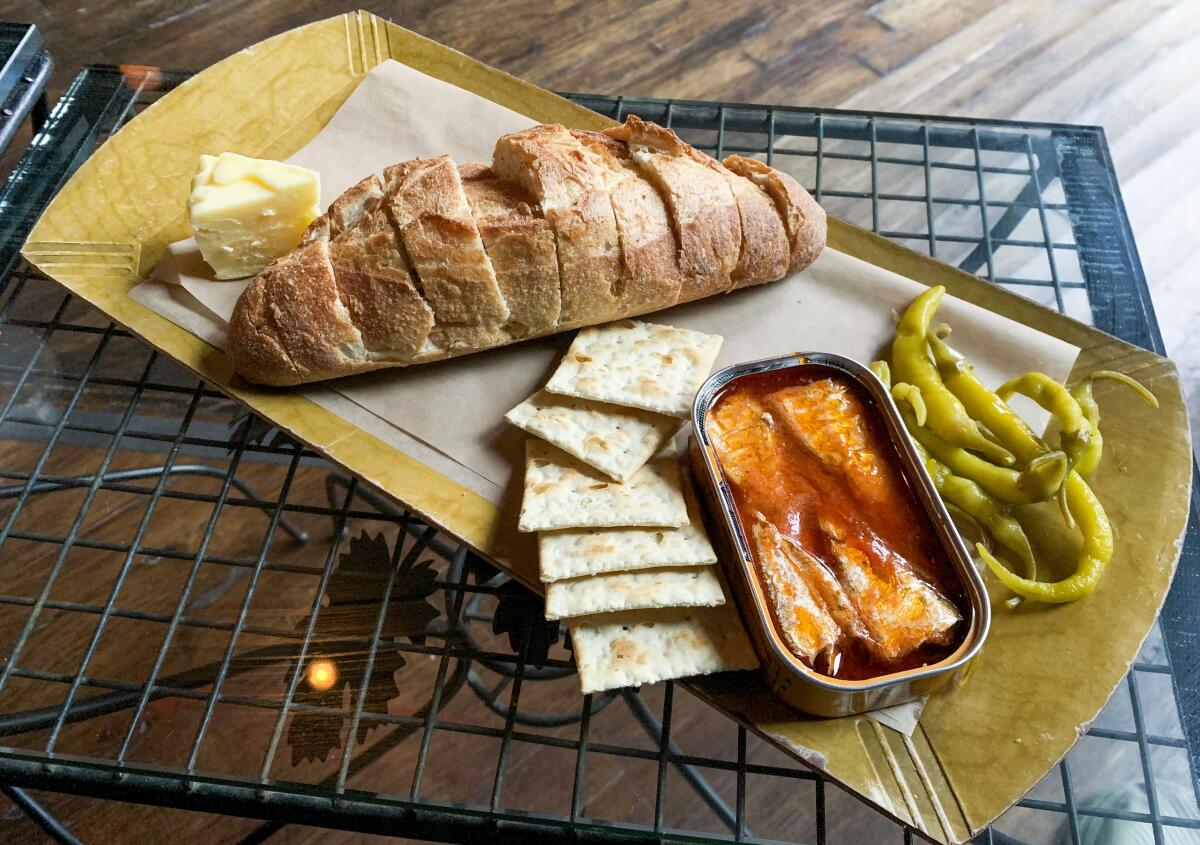
I’ve been loving Kippered, the tinned fish and wine bar from Lydia Clarke and Reed Herrick of DTLA Cheese — now DTLA Cheese Superette after moving down Broadway from the Grand Central Market. And I love starting a meal with tinned fish and pan con tomate at David Rosoff and Chris Feldmeier‘s Bar Moruno. But there are many more great places to enjoy conservas, as the Spanish call tinned fish — a far cry from your grandpa’s supermarket canned sardines. Assistant food editor Danielle Dorsey enlisted restaurant critic Bill Addison, deputy food editor Betty Hallock and columnists Jenn Harris and Lucas Kwan Peterson to find the 12 best places to get tinned fish in L.A.
Have a question?
Also ...
—Jenn Harris says, yes, you can eat onion rings for dinner.
—Stephanie Breijo has the week’s restaurant news, including two New York expansions — Greenwich Village’s Italian classic Dante is opening in Beverly Hills, and Levain Bakery, “known for its gooey, thick cookies and lines out the door,” is open on Larchmont Bouelvard. Plus, chef Jihee Kim‘s pop-up Perilla has opened in Chinatown, specializing in “quick-service banchan, kimbap and other Korean specialties.” Vegan celebrity chef promoter Matthew Kenney, after the spring closing of “his Venice flagship,” Plant Food + Wine, is reopening in the Four Seasons Hotel in Beverly Hills.
—Ben Mims has a shortcut for making pineapple upside-down cake for summer.
—Andrew J. Campa on the $600,000 wine shop heist.
Sign up for the Tasting Notes newsletter
Eat your way across L.A.
Get our weekly Tasting Notes newsletter for reviews, news and more.
You may occasionally receive promotional content from the Los Angeles Times.
